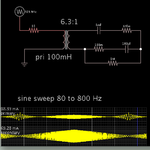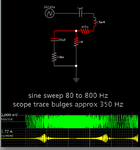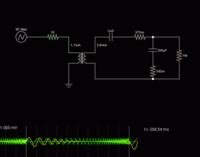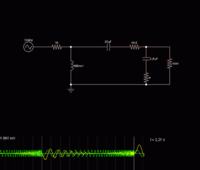dot4
Member level 1

- Joined
- Oct 24, 2010
- Messages
- 35
- Helped
- 6
- Reputation
- 12
- Reaction score
- 6
- Trophy points
- 1,288
- Activity points
- 1,535
Hello,
I'm doing my first transformer design, and I'm wodering what causes input current drop in attached circuit at around 300 Hz.
I know it is caused by capacitive loading, but still can't figure out what exactly is happening in the circuit.
(In the graph, the red curve represents current through primary winding and the green curve for secondary winding)


Thanks for help
dot4
I'm doing my first transformer design, and I'm wodering what causes input current drop in attached circuit at around 300 Hz.
I know it is caused by capacitive loading, but still can't figure out what exactly is happening in the circuit.
(In the graph, the red curve represents current through primary winding and the green curve for secondary winding)


Thanks for help
dot4





